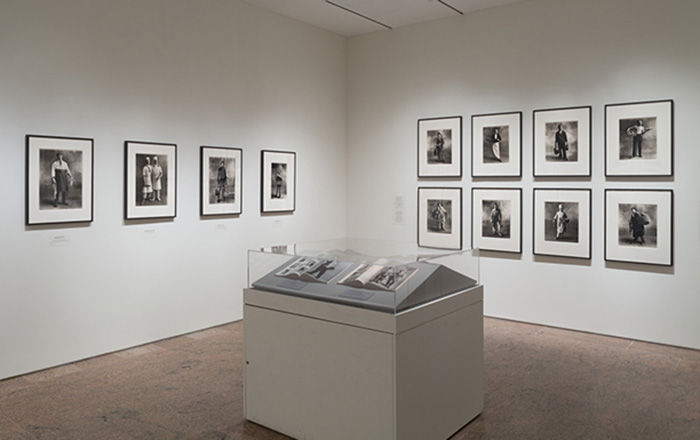Autorretrato con Úrsula
Annemarie Heinrich Argentine, born Germany
Not on view
Refracted in the surface of a mirrored ball, Annemarie Heinrich’s studio becomes an experimental space of play. By 1938, when Heinrich and her sister posed for this self-portrait, the photographer was an established professional in Buenos Aires’s flourishing photo community. She had emigrated from Berlin with her family in 1926, and after a series of apprenticeships, she established her own studio at the age of 18. Drawing on early training in dance and scenography, Heinrich cultivated a keen eye for studio lighting. Her tenebrous, dramatically staged portraits caught the attention of local performers, and her studio soon swarmed with conductors, contraltos, balladeers, and ballerinas. She published widely, finding steady work in the Argentinian entertainment press. In these commissions, the mirrored ball occasionally surfaces—as in her cerebral study of tango star Beba Bidart (1940). But, off-the-clock in this self-portrait, she rolls the prop into high gear, exploring its possibilities of extreme distortion. The effect is urgently modern and yet essentially art historical; forebears from Jan van Eyck to Parmigianino experimented with the optical effects of convex glass, anticipating photographic concerns by several centuries. Careening along after them, Heinrich gives the genre a creative spin.
